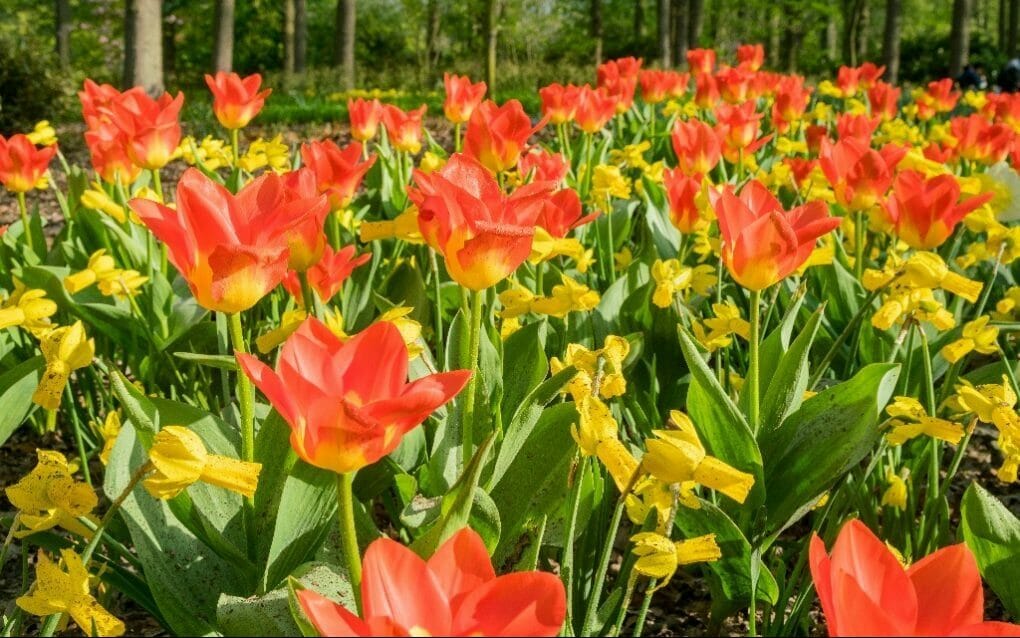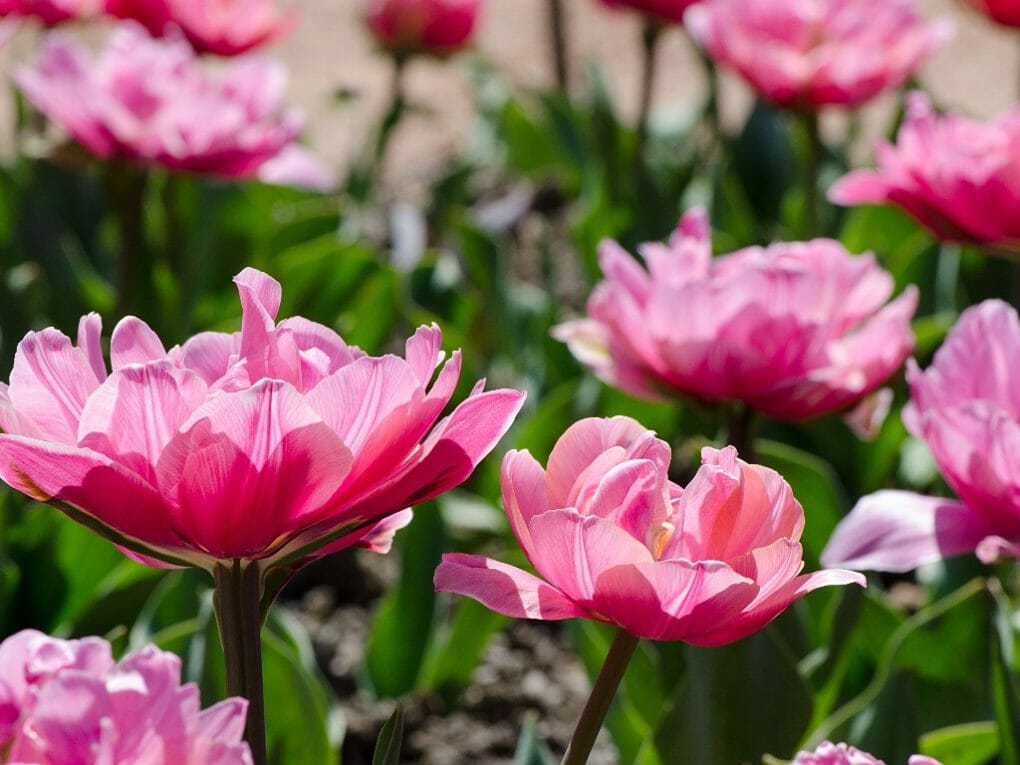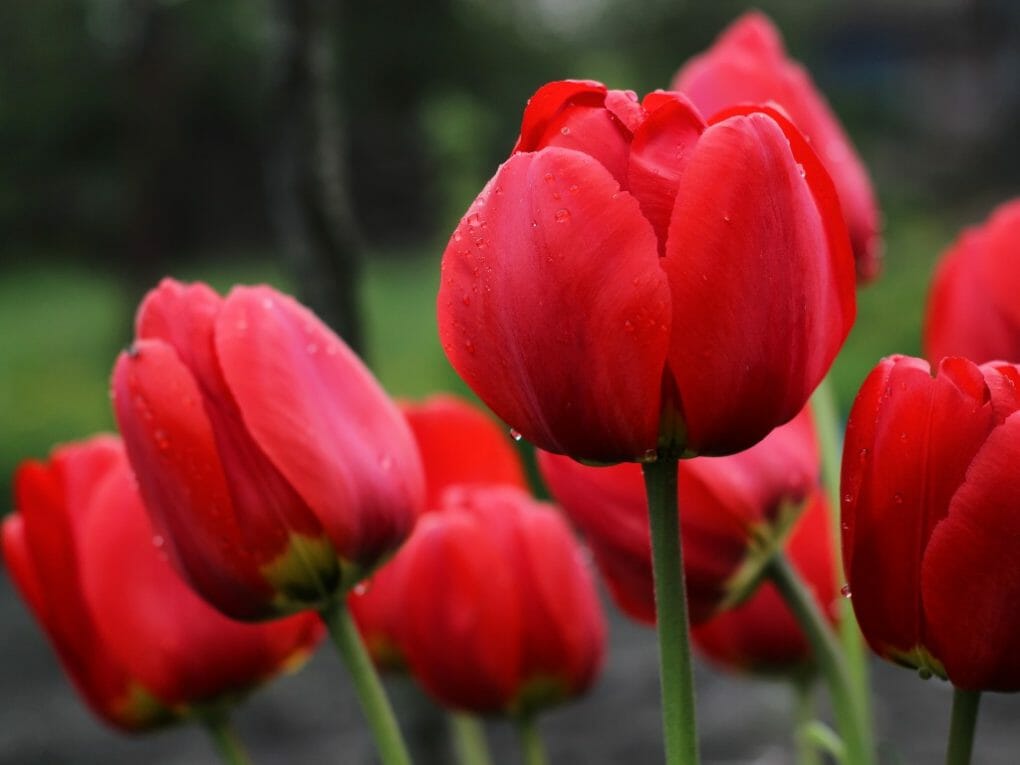How Many Petals Does A Tulip Have? Interesting Facts About Tulips

The flower of this plant is fashioned like a bell and has three petals, three sepals, and six free stamens. The height of the tulip ranges from six to ten inches, and it has two or three clustered leaves with parallel veining at the base. Because there are such wide varieties of tulips, they may produce practically every flower hue, ranging from the very whitest to the very darkest, except the highly true blue.
Since the tulip is a perennial flower, it will continue to produce flowers year after year. Since it blooms towards the beginning of spring, the tulip is a virtually necessary component of each flower garden.
If you do this, your garden will have color even before the other flowers have had a chance to blossom. The tulip should be planted in the fall, anytime from September to December, as long as the ground is not frozen over at the time of planting.
When the leaves have turned brown, it is essential to prune the plant by cutting back the leaves and the blossom so that the bulb can receive all the nutrients it needs.
Tulips are most successful when grown in light and well-draining soil, such as sandy soil. When bulbs are planted in soil with higher clay content, the soil will retain water for longer, increasing the risk of the bulbs becoming infected.
Tulips, like daffodils, can grow at virtually any temperature. However, they do best in regions that have cold winters and hot, dry summers, such as the upper to middle Midwest of the United States. Daffodils, on the other hand, can thrive in almost any climate.
Table of Contents
Interesting Facts About Tulips
In days gone by, the tulip was native to Turkey and Persia, playing an essential part in both countries’ artistic and cultural traditions. The name “tulip” comes from the Persian word “Del band,” which originally referred to a flower (turban). Believed that the flower got its name from the shape of its headpiece, which resembled a turban.
Tulip flowers emerge from bulbs in the spring. Spring is typically when they put out their flowers. Carolus Clusius is credited with being the first person to discover the viral infection tulip, also known as a shattered tulip. These plants have a lifespan of more than two years and are classified as perennials, which indicates that they do not have any woody structure.
Types of Tulips

There are currently over 3,000 different tulip variations that have been registered across the globe. These variants have been organized into fifteen distinct divisions or groups according to the sorts of flowers they produce, the length of time they bloom, and their size. The following is a list of some of the most well-known species of flower:
Single Early
Solitary early plants have single, cup-shaped flowers that grow to be 15 to 45 centimeters tall. They bloom early until about halfway through the season.
Double Early
This type of tulip often ranges in height from 30 to 40 centimeters and has flowers that are entirely double and fashioned like bowls. They start to bloom just before the season’s peak.
Triumph
Single, cup-shaped flowers make up the triumph. Plants can reach heights between 35 and 60 cm. They bloom sometime between the middle and end of the season.
Darwin Hybrid
Ovoid-shaped flowers appear singly on plants that reach heights of 50–70 centimeters. Bloom sometime between the middle and end of the season.
Single Late
Single late flowers in the shape of a goblet or cup and plants that grow between 45 and 75 centimeters tall. Bloom toward the end of the season.
Double Late
These flowers often have a large bell shape and massive blooms; their height can range from 18 to 22 inches. Bloom toward the end of the season.
Fringed (Crispa)
This plant has crystal-like fringes that grow to be between 45 and 65 centimeters tall. Bloom toward the end of the season.
Parrot Tulip
Growing between 40 and 60 centimeters in height, the spectacular flower known as the parrot tulip has a whimsically formed and pointed appearance. Bloom in mid-late season.
Acropolis Tulip
The Acropolis tulip has a curved bell-shaped blossom that can grow between 50 and 60 centimeters tall. Bloom toward the end of the season.
Blue Heron Tulip
The blue heron tulip has big petals with crystallized edges and can grow between 10 and 15 centimeters tall. Bloom around the season’s middle to end.
Characteristics of Tulips
- Tulips have flowers that are bell-shaped and beautifully colored. These flowers grow on stems that sprout from bulbs, which are also flowers.
- The tulip plant develops a cluster of thick, multicolored leaves at its stem’s base. These leaves can range in number from two to several.
- The blooms, typically in the shape of bells, each feature three petals, three sepals, and three stalks. There are six free stamens, and the three-lobed ovary is finished off by a stigma attached to the ovary and is sessile.
- The fruit resembles a capsule and contains several seeds. There are many types of garden tulips that can only be propagated via their scale-covered bulbs.
Quick Points

- Sowing tulip bulbs in the summer is necessary to flower the following spring. Tulips bloom in the spring.
- The Netherlands is responsible for the annual production of about 12.5 billion flowers.
- The Dutch tulip is one of the world’s tallest flowers, ranking among the top five.
- The speculative frenzy surrounding tulips in the Netherlands between 1633 and 1637 is now commonly referred to as the Tulip Mania.
- Late-blooming tulips are the most diverse in terms of their coloration and growth patterns, and they are the most numerous.
- The Netherlands is the world’s most important producer and exporter of tulips.
- Since the blooms originated in mountainous regions, they require what is known as vernalization, which is a period of cold hibernation.
- The flower buds have a reputation for possessing a near-perfect symmetrical pattern.
- Tulips can be found in about every color imaginable, and the many hues each signify something unique.
- They will still contort themselves to reach the light when contained within a vase.
- Carolus Clusius is credited with being the first to detect a viral infection that is now often referred to as a “broken tulip.”
Uses of Tulips
The most common uses for tulip blooms are:
The benefits of Tulip flower as a cosmetic ingredient include its use in creams, hand creams, and lotions, among other beauty products. Tulip extract is frequently found in perfumery and essential oils.
This product has been shown to reduce cancer incidence and is the best cure for coughs and colds. Used to treat pain in the sinuses and fever, and headache. Additionally, it possesses antibacterial qualities.
Tulips offer many environmental benefits, including the ability to inject a burst of color into their surroundings. Throughout the 13th century, numerous Persian writers looked to tulips as a source of creativity and inspiration.
Medicinal Benefits
It is well known that tulip petals are good medicine for bug stings, bites, bees, burns, and rashes on the skin. When applied to the affected area, the petals prevented inflammation, provided prompt relief, and had a calming effect. Hold the leaves in your hands and place them in the area that needs relief for instant relief.
When gardening and decorating, one of the most common uses for flowers is to create stunning flower arrangements. Used as a present to surprise the people you care about the most in your life. Tulips are by far the most common type of flower to be used for weddings in terms of overall decorating, table decorations, and bridal bouquets. Applied in the context of gardening.
